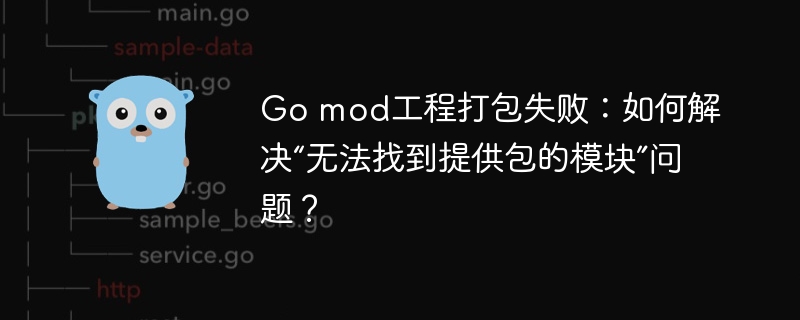
函数式编程 (FP) 原则因其强调不变性、可组合性和显式性而在现代软件开发中日益流行。虽然 Go 语言传统上是一种命令式语言,但 IBM 开发的 fp-go 库引入了 FP 抽象,例如 Option、Either、Fold 以及用于函数组合的实用工具。本文将探讨如何利用 fp-go 显式处理错误,定义包含多种错误类型的函数签名,并构建一个真实的 CRUD API 示例来演示这些概念。
错误处理对于构建可靠的软件至关重要。传统的 Go 错误处理依赖于返回错误值,这可能被意外忽略或处理不当。函数式错误处理引入了抽象,例如:
Option: 表示可选值,类似于其他 FP 语言中的 Some 和 None。Either: 封装一个可以是 Right(成功)或 Left(失败)的值,使错误传播更加清晰。让我们深入研究这些概念,看看 fp-go 如何在 Go 中简化这些过程。
首先,将 fp-go 添加到您的 Go 项目中:
go get github.com/ibm/fp-go导入必要的模块:
import (
"github.com/ibm/fp-go/either"
"github.com/ibm/fp-go/option"
)Option:处理可选值Option 代表一个可能存在也可能不存在的值。它要么是 Some(包含值),要么是 None。
func parseInt(input string) option.Option[int] {
value, err := strconv.Atoi(input)
if err != nil {
return option.None[int]()
}
return option.Some(value)
}
func main() {
opt := parseInt("42")
option.Fold(
func() { fmt.Println("no value") },
func(value int) { fmt.Printf("parsed value: %dn", value) },
)(opt)
}Option 消除了 nil 值的歧义。Fold 用于处理 Some 和 None 两种情况。Either:显式处理错误Either 代表一个可能产生两种结果的计算:
Left: 代表错误。Right: 代表成功。type MathError struct {
Code string
Message string
}
func safeDivide(a, b int) either.Either[MathError, int] {
if b == 0 {
return either.Left(MathError{Code: "div_by_zero", Message: "cannot divide by zero"})
}
return either.Right(a / b)
}
func main() {
result := safeDivide(10, 0)
either.Fold(
func(err MathError) { fmt.Printf("error [%s]: %sn", err.Code, err.Message) },
func(value int) { fmt.Printf("result: %dn", value) },
)(result)
}Either 清晰地将成功和失败路径分开。Fold 简化了在一个地方处理这两种情况的过程。实际应用通常需要处理多种类型的错误。使用标记联合,我们可以定义明确的错误类型。
type AppError struct {
Tag string
Message string
}
const (
MathErrorTag = "matherror"
DatabaseErrorTag = "databaseerror"
)
func newMathError(msg string) AppError {
return AppError{Tag: MathErrorTag, Message: msg}
}
func newDatabaseError(msg string) AppError {
return AppError{Tag: DatabaseErrorTag, Message: msg}
}
func process(a, b int) either.Either[AppError, int] {
if b == 0 {
return either.Left(newMathError("division by zero"))
}
return either.Right(a / b)
}
func main() {
result := process(10, 0)
either.Fold(
func(err AppError) { fmt.Printf("error [%s]: %sn", err.Tag, err.Message) },
func(value int) { fmt.Printf("processed result: %dn", value) },
)(result)
}让我们使用 Either 实现一个带有显式错误处理的简单 CRUD API。
type User struct {
ID int
Name string
Email string
}
type AppError struct {
Code string
Message string
}
const (
NotFoundError = "not_found"
ValidationError = "validation_error"
DatabaseError = "database_error"
)
func newAppError(code, message string) AppError {
return AppError{Code: code, Message: message}
}var users = map[int]User{
1: {ID: 1, Name: "alice", Email: "alice@example.com"},
}
func getUserByID(id int) either.Either[AppError, User] {
user, exists := users[id]
if !exists {
return either.Left(newAppError(NotFoundError, "user not found"))
}
return either.Right(user)
}func validateUser(user User) either.Either[AppError, User] {
if user.Name == "" || user.Email == "" {
return either.Left(newAppError(ValidationError, "name and email are required"))
}
return either.Right(user)
}
func createUser(user User) either.Either[AppError, User] {
validation := validateUser(user)
return either.Chain(
func(validUser User) either.Either[AppError, User] {
user.ID = len(users) + 1
users[user.ID] = user
return either.Right(user)
},
)(validation)
}func handleGetUser(id int) {
result := getUserByID(id)
either.Fold(
func(err AppError) { fmt.Printf("Error [%s]: %sn", err.Code, err.Message) },
func(user User) { fmt.Printf("User: %+vn", user) },
)(result)
}
func handleCreateUser(user User) {
result := createUser(user)
either.Fold(
func(err AppError) { fmt.Printf("Error [%s]: %sn", err.Code, err.Message) },
func(newUser User) { fmt.Printf("Created user: %+vn", newUser) },
)(result)
}
func main() {
handleGetUser(1)
handleCreateUser(User{Name: "Bob", Email: "bob@example.com"})
handleGetUser(2)
}通过在 Go 中使用 fp-go,我们可以:
Either 显式建模错误。Option 表示可选值。这些模式使您的 Go 代码更加健壮、可读和实用。无论您是构建 CRUD API 还是复杂的业务逻辑,fp-go 都能帮助您以清晰一致的方式处理错误。 记住替换 strconv.Atoi 为实际的 strconv 包导入。





